The Fruits of Completion
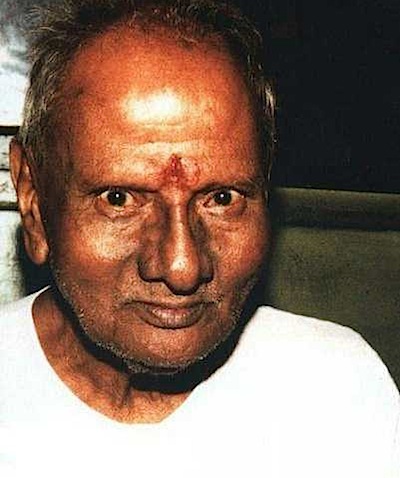
“You have a purpose only as long as you are not complete; until then, completeness, perfection, is the purpose. But when you are complete in yourself, fully integrated within and without, then you enjoy the Universe; you do not labor at it.”
–Sri Nisargadatta Maharaj (Indian Spiritual Teacher and Exponent of Jnana Yoga and Advaita Doctrine, 1897-1981)
Re-Enchanting the World
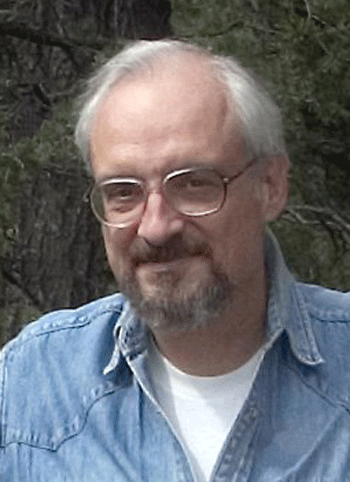
“Because disenchantment is intrinsic to the scientific worldview, the modern epoch contained, from its inception, an inherent instability that severely limited its ability to sustain itself for more than a few centuries. For more than 99 percent of human history, the world was enchanted and man saw himself as an integral part of it.
The complete reversal of this perception in a mere four hundred years or so has destroyed the continuity of the human experience and the integrity of the human psyche. It has nearly wrecked the planet as well.
The only hope, or so it seems to me, lies in a re-enchantment of the world.”
–Morris Berman (American Cultural Historian, Writer and Visiting Faculty Member of the Catholic University of America, 1944-)
Self-Actualization
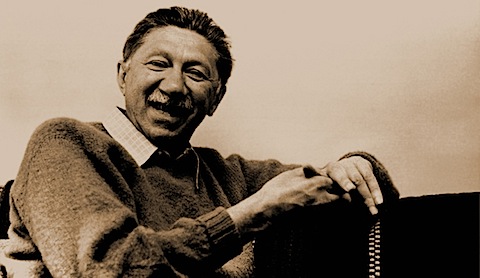
“Something of the sort has already been described for the self-actualizing person. Everything now comes of its own accord, pouring out, without will, effortlessly, purposelessly.
He acts now totally and without deficiency, not homeostatically or need-reductively, not to avoid pain or displeasure or death, not for the sake of a goal further on in the future, not for any end other than itself.
His behavior and experience becomes per se, and self-validating, end-behavior and end-experience, rather than means-behavior or means-experience.
At this level, I have called the person godlike because most gods have been considered to have no needs or wants, no deficiencies, nothing lacking, to be gratified in all things. The characteristics and especially actions of the “highest,” “best” gods have then been deduced as based upon not-wanting.”
–Abraham H. Maslow (American Psychologist, 1908-1970)

The Law of Love
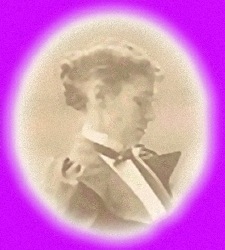
“All disease, all unhappiness, come from the violation of the law of love. Man’s boomerangs of hate, resentment and criticism, come back laden with sickness and sorrow. Love seems almost a lost art, but the man with the knowledge of spiritual law knows it must be regained, for without it, he has “become as sounding brass and tinkling cymbals.”
–Florence Scovel Shinn (American Artist, Metaphysics Teacher and Author, 1871-1940)
Your Personal Essence
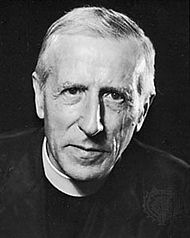
“Every being…has its own particular essence crowned by a certain quality, a certain form (common to all) which makes it an integral, rightly adapted, part of the single Whole with which it shares a natural harmony.”
–Pierre Teilhard de Chardin (French Jesuit Priest, Mystic, Paleontologist and Author, 1881-1955)
Harmony, Connection and Integration
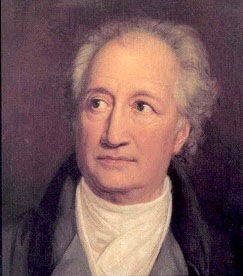
“How all things weave themselves into the whole, one working and living into the other, all sounding harmoniously through the All.”
–Johann Wolfgang von Goethe (German Poet, Playwright and Philosopher, 1749-1832)

“Faust: Part 1 (Penguin Classics) (Pt. 1)” (Johann Wolfgang von Goethe)
The Integral Vision
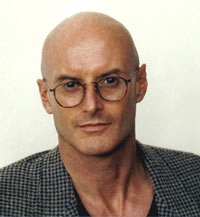
“The integral vision, I believe, is more than happy to welcome empirical science as a part — a very important part — of the endeavor to befriend the Kosmos, to be attuned to its many moods and flavors and facets and forms. But a more integral psychology goes beyond that . . .
With science we touch the True, the “It” of Spirit. With morals we touch the Good, the “We” of Spirit.
What, then, would an integral approach have to say about the Beautiful, the “I” of Spirit itself? What is the Beauty that is in the eye of the Beholder? When we are in the eye of Spirit, the I of Spirit, what do we finally see?”
–Ken Wilber (American Philosopher, 1949-)
Healing Everything
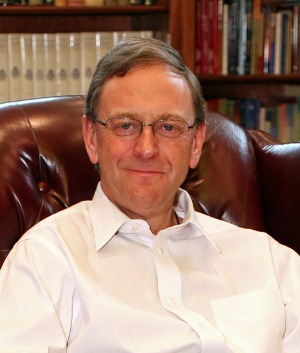
I get a huge number of requests for more information about my philosophy of health and healing; where it came from, and why people believe that my approach is the medicine of the future: hence the amusing title of “The Future Doc.”
My belief in an “integrated” approach to health and healing, that engages the physical, psychological, social, subtle and spiritual aspects of life is not confined to the treatment and personal growth of individuals. It also encompasses ecology, sociology and business practices. In many respects I have followed a similar path to Ken Wilber, but while he has been the theorist par excellence, whose ideas are now being test-driven in a multitude of different applications, I started from personal perception and clinical practice. I talk about some of the origins of my work in Healing, Meaning and Purpose.
It is well-known that I had the privilege of working with the Prince’s Foundation for Integrated Medicine, which is now the Foundation for Integrated Health, and I recently came across this statement by His Royal Highness The Prince of Wales in the magazine Temenos that beautifully summarizes the philosophy that underlies the entire approach.
“As I have grown older I have gradually come to realize that my entire life so far has been motivated by a desire to heal – to heal the dismembered landscape and the poisoned soil; the cruelly shattered townscape, where harmony has been replaced by cacophony; to heal the divisions between intuitive and rational thought, between mind, body and soul, so that the temple of our humanity can once again be lit by a sacred flame; to level the monstrous artificial barrier erected between Tradition and Modernity and, above all, to heal the mortally wounded soul that, alone, can give us warning of the folly of playing God and of believing that knowledge on its own is a substitute for wisdom.”
Most of us realize that the world has become terribly unbalanced, with an extraordinary over-emphasis on the intellect and a tacit assumption that the world is an object to be plundered. In the halls of academia, “heart,” “intuition” and “soul” have often become dirty words, even though it is difficult to see how we can repair our imbalanced world without acknowledging the importance of all of them. This is not to decry the importance of reasoning, but it is an appeal to acknowledge the existence of the soul, to heal our connection with and to listen to her intuitive urgings.
Prince Charles has also said that,
“In medicine, as in architecture, the doctrine of man as a machine has held sway. God was declared dead – I remember it happening. The soul was declared moribund and redundant. Ancient well-tried therapies and diagnostic techniques were simply abandoned and thrown away. The balance of the rational and the intuitive was destroyed.”
I totally agree, and it is this balance that we have to restore.
Our lives depend on it.
Non-pharmacological and Lifestyle Approaches to Attention-Deficit/Hyperactivity Disorder: 11. Integrated Medicine

The whole point of Integrated Medicine and Integrated Health is to help the person with attention-deficit hyperactivity disorder (ADHD) to become integrated as a person by using an integrated approach to treatment. This kind of comprehensive approach is particularly important for many people with ADHD. I also want to re-emphasize that although ADHD is the approved term for the problem, many people, particularly adults, may have little overt evidence of hyperactivity, and they are better thought of as having “ADD.”
Attentional problems come in all shapes and sizes. Some are so mild that people just need to be shown how to use a day planner and implement some time management scheme. Others need a more aggressive and comprehensive approach. Whatever we do has to be individualized to the person with the problem. Not only do we have to match the plan with the person, we also need to match it with his or her belief system.
It is important to recognize that no one approach is likely to work on its own. Medications may be very helpful, but they are only tools to help people get organized so that they can fulfill their potential. And medications are unlikely to be effective unless we also deal with nutrition, posture, breathing, sleep and environmental stress.
It is also essential to realize that ADHD is highly co-morbid: there is evidence of increased rates of physical problems, including disturbances in thyroid function and cell membrane function throughout the body. The rates of conduct disorder, oppositional defiant disorder, learning disabilities, tics and Tourette’s, worry, anxiety and mood disorders are all much higher in people with ADHD. So high that until recently, many experts believed that ADHD was a symptom rather than a clearly delineated illness. This overlap is also one of the reasons why some people persist in saying that the diagnosis of ADHD is nothing more than a stigmatizing label for socially unacceptable behavior.
Physical
- Medications
- Nutrition
- Posture
- Exercise
- Environment
Over the last few weeks we have spent a lot of time looking at some of the options for treating the physical components of the problem. Now let us look at the rest.
Psychological
- Find out and work with a person’s interests. ADHD is highly dependent on context. A child or adult may have terrible problems with schoolwork, but be able to play a video game for hours on end
- There are multiple intelligences: uncover which are of the greatest importance. It is essential for a person to discover their strengths rather than being forced to focus on the weaknesses. Many people with ADHD find that highlighting text in a book can be useful, while others learn by doing
- People are more likely to follow instructions if they are interesting and emotionally charged
- Bear in mind that many people have poor self-esteem and others suffer from enormous feelings of regret. This is a particular issue for people who may have reached middle age before being diagnosed. We have seen countless people who feel that they have missed out on life. A man working in construction realized that he could have gone to college thirty years ago if only his ADHD had been diagnosed and treated
- Teach visualization skills
- Discover which times of the day are best in terms of attention and alertness
- Learn some simple relaxation techniques
- Learn problem-solving skills
Social
- ADHD can play havoc with relationships. If a child has it, there can be enormous stress on the parents and siblings, all of whom are at higher risk of some features of ADHD themselves. It is essential to help the family with coping skills. ADHD can also put a great deal of stress on a spouse or children. It is also important to know that many people with ADHD have sexual problems that stem from impatience, a low frustration threshold if they cannot have sex when they want it, and real problems with enjoying the moment and taking time to enjoy a romantic interlude. Some people also use sex as a form of self-medication. So it is essential to find out if there are sex or relationship problems and to deal with them, which may need outside help
- Many people with ADHD are socially awkward and may need to learn some social and communication skills
- ADHD and social awkwardness can be magnets for bullies, and it is remarkable how many young people with untreated or inadequately treated ADHD have been bullied. Occasionally they become the perpetrators of bullying to compensate for their difficulties. In either case it is important to discover and deal with bullying. It is one of several reasons why some experts have recommended enrolling a child in martial arts classes. Not only can they help with self-defense, but also the discipline of a martial arts class can work wonders for some people with ADHD
- Role models are important for people with ADHD. It is very helpful, particularly for young people to see that other sufferers have become extremely successful
- It is also important for parents and other family members to develop and maintain a positive image of the person with ADHD
- Develop positive yet realistic career and life goals
Subtle
- Poor breathing techniques can engender many problems. Learning to breath effectively can have profound physical effects as well as stimulating and balancing the subtle systems of the body
- As we have seen, although the research base is very small, yoga, t’ai chi ch’uan or qigong can all be very helpful
- Many people with ADHD are acutely sensitive to “atmosphere:” to the thoughts, feelings and attitudes of other people, and they need specific help to remain grounded and to protect their senses. Some of the flower essences can very helpful for that, as well as some other techniques that we shall be publishing shortly
Spiritual
- How can there be a spiritual component to ADHD? Some people find it difficult to engage in prayer or meditation because of problems with attention. However, with a little perseverance, we have evidence that some forms of meditation may actually help.
- Second the rituals of religion can sometimes provide a wonderful anchor for the person who is having a had time with ADHD.
- Another point is that ADHD is not all bad. Some people who have it become more attuned to nature, animals and to a mystical understanding of the world: an over-reliance on reasoning and linear learning can stifle those perceptions.
- Some people have suggested that ADHD may for the same reasons unlock a rich vein of creativity that might otherwise never have appeared.
There are plenty of books and websites that portray ADHD as a gift. While I have the greatest respect for this approach, it is still important for us not to forget the demonstrable problems caused by inadequately treated ADHD.
ADHD exists, it is treatable, and though it can bring many problems, it can also bring many opportunities. Just so long as we remember to respect every dimension of the person who has it, and remember that if we do not manage it, it will manage us.
Communicating About Complementary and Alternative Medicine
Two of the key points about Integrated Medicine are transparency and integration of different approaches.
It is true to say that all healing is ultimately self-healing, but at the heart of healing lies relationship: how we communicate with every part of ourselves, with other people and with our health care providers. At the most mundane level, there is published data that if a health care provider has a good relationship with the person coming to them for help, the chance that the person will follow through on a treatment plan is four times higher than if they meet a health care provider who just grunts at them.
There is also a magic that can happen in strong, dynamic relationships based on partnership rather than dominance: one of the themes of Healing, Meaning and Purpose.
It worried, but did not surprise me to see a study released today.
Most Americans age 50 and older use complementary and alternative medicine (CAM), such as supplements, herbal products or acupuncture. The trouble is that – according to a survey conducted by AARP and the National Center for Complementary and Alternative Medicine – they often do not tell their doctors or nurses.
It is very much in person’s best interests to tell their doctor about the CAMs that they are taking because some unorthodox medicines may interfere with over-the-counter medications, prescription drugs, or other conventional medical approaches. See here for an example of some herbal remedies and supplements that may interact with psychotropic medicines.
As the report says, "Communication between patients and physicians about CAM and conventional therapies is vital to ensuring safe, integrated use of all health care approaches."
It goes on to say something that we have been preaching for years: an open dialog "allows patients and physicians the opportunity to identify CAM practices that might be beneficial and also minimizes risks to a patient from potential therapy interactions."
Among a total of 1,559 individuals age 50 and older surveyed in the spring of 2006, 63 percent reported having used one or more CAM therapies.
According to the survey – which can be found here – people between the ages of 50 and 59 are the most likely to report CAM use.
Forty-five percent of CAM enthusiasts used massage therapy, chiropractic manipulation or other bodywork; 42 percent used herbal or dietary supplements; 15 percent used mind/body practices, including hypnosis and meditation; 14 percent used naturopathy, acupuncture, or homeopathy; and 10 percent had tried energy therapies.
Sixty-six percent of CAM users said they did so to treat a specific health problem; 65 percent for overall wellness; 45 percent to supplement conventional medicine; and 42 percent to prevent illness.
Sixty-nine percent of those who reported using CAM had not discussed it with a doctor.
The intersting qustion is, "Why?"
Forty-two percent said because their doctor never asked; 30 percent said they did not know they should; 19 percent felt there was not enough time during the office visit; 17 percent didn’t think the doctor would know about the topic; and 12 percent thought the doctor would be dismissive or tell them not to use CAM.
Women were more likely than men to have discussed CAM use with their doctor (26 percent vs 16 percent) and those younger than age 65 were more likely to discuss CAM use than were older individuals.
The report concludes that "patients need to mention CAM use to their physicians and physicians need to ask about it."







